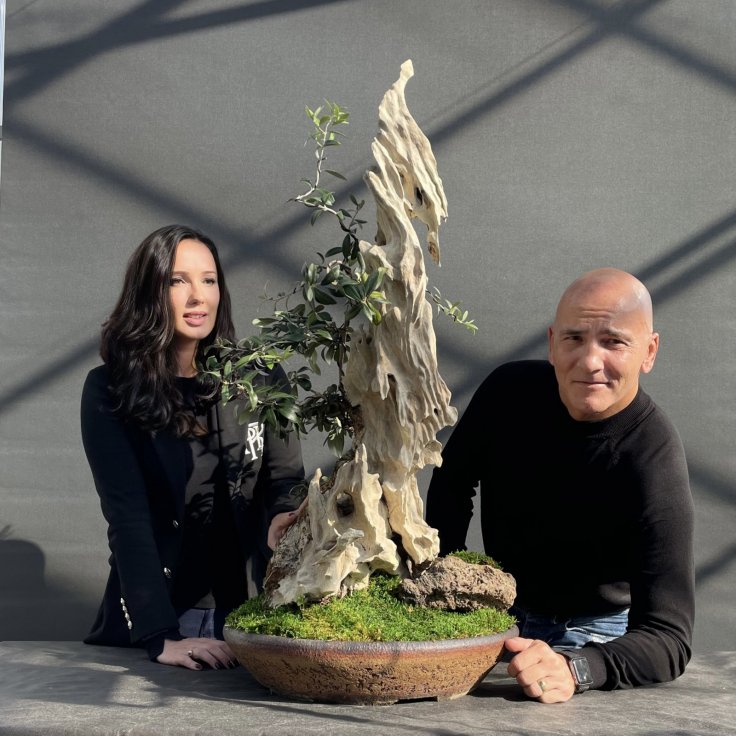Dr. Kasia Sterriker is a renowned artist, scientist, and biophilic designer who has been making waves in the design and property development industry. Her work blurs the lines between art and architecture, creating stunning and sustainable environmental art that not only enhances spaces aesthetically but also generates physical and psychological benefits for those who experience it. We had the honor of having a conversation with Dr. Kasia Sterriker about her career, influences, and future plans.

Q: To start, can you briefly describe the experiences and education that shaped you as a biophilic designer?
A: My early experiences with the interrelationship between art and science were shaped by the influential guidance of my father, an International Bonsai Master and Instructor, and my grandfather, a university lecturer and distinguished Engineer. I was captivated by the intricate beauty of nature and the way science enables us to explore and understand it while also being drawn to the expressive potential of painting and sculpture.
Determined to combine my passions, I pursued dual doctoral degrees, one in environmental engineering and the other in landscape architecture. It was through this educational journey that I ultimately came to discover biophilic design, a field that harmoniously merges the art and science of nature into an innovative and sustainable approach to architectural design.
Q: Could you please elaborate on biophilic design and what sets it apart from traditional design?
A: Biophilic design is an approach to architecture and interior design that integrates natural elements into the built environment to establish a more ecologically sound and health-promoting living space. In contrast to conventional design paradigms, which may prioritize form and function over the welfare of inhabitants, the biophilic design places a strong emphasis on the interconnectedness between humanity and nature.
Through this approach, biophilic designers seek to cultivate environments that positively influence human physical and emotional well-being while simultaneously promoting ecological sustainability.
Q: Our readers would love to know about your design philosophy and how you incorporate it into your work.
A: Well, at the heart of my design philosophy lies a deep conviction that the natural world and artistic expression are intrinsically interconnected and capable of imparting an elevated sense of well-being to the human experience when thoughtfully interwoven. I ardently endeavor to craft designs that not only capture the essence of nature's exquisiteness but also work in a pragmatic capacity that tangibly enriches the lives of inhabitants.
To achieve this, I integrate biophilic elements, such as verdure, cascading water features, and natural materials, such as wood and stone, into my designs, thereby creating spaces that not only visually engage but also foster health and well-being in equal measure.
Q: This conversation would not be complete if we didn't talk about your newest venture, The House of Kasia. Can you tell us more about House of Kasia and the inspiration behind
your signature pieces?
A: House of Kasia is a brand that my husband, Paul, and I established to create an entirely new series of signature pieces that reflect the remarkable transformation of the region and a wider range of works that extend to non-organic biophilic sculptures, murals and even a range of biophilic sculpture jewelry . Our designs are inspired by the spirit of innovation and optimism that permeates these lands. We aim to create pieces that not only celebrate the beauty of nature but also symbolize the transition from traditional to contemporary design.
Q: How do you collaborate with clients to develop personalized biophilic designs for their spaces?
A: In my approach to working with clients, I prioritize gaining a deep understanding of their desired outcome for the space and the specific goals they hope to accomplish through biophilic design. From there, I create a custom design that seamlessly integrates natural elements to enhance the overall aesthetic and functionality of the space.
In addition to my design work, I have been fortunate to have my unique pieces of environmental art sell for an average range of 30-100 thousand euros, and I feel incredibly grateful for the opportunity to bring my clients' visions to life and to integrate these beautiful works of art into these designs.
Conclusion
In conclusion, this conversation with Dr. Kasia Sterriker has shown you how you can creatively push the boundaries of art, nature, and architecture to create stunning, sustainable works that benefit people physically, mentally, and aesthetically. Her passion for the natural world and artistic expression shines through in her designs, which seamlessly integrate natural elements to enhance the overall aesthetic and functionality of spaces.
As Dr. Kasia and Paul continue to create stunning works of environmental art and design, it is clear that their vision and passion will continue to inspire and influence the industry for years to come.
Follow Dr. Kasia on Instagram and check out her website to find out more about her, her projects, and the sustainable design movement that she advocates for.









